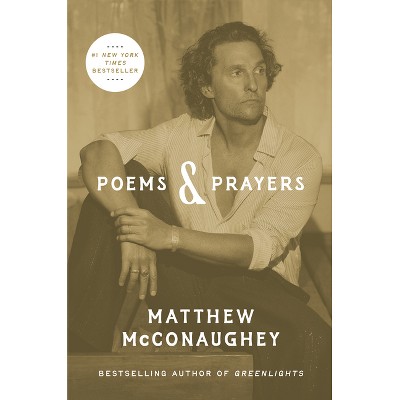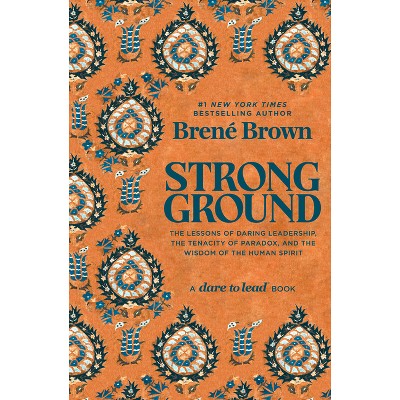Sponsored

Borderline Bodies in Art and Visual Culture - by Keren Hammerschlag & Natasha Ruiz-Gómez & Tania Anne Cleaves (Hardcover)
Pre-order
Sponsored
About this item
Highlights
- Borderline bodies offers original interpretations of visual representations of human bodies as bounded and unbounded, fortified and permeable, mobile and static--subject to borders and able to traverse and challenge them.
- About the Author: Keren Rosa Hammerschlag is Senior Lecturer in Art History and Curatorship at the Australian National UniversityNatasha Ruiz-Gómez is a Senior Lecturer in Art History at the University of EssexTania Cleaves (née Woloshyn) is an alternative-academic and Research Development Manager at the University of Nottingham
- 320 Pages
- Art, History
Description
About the Book
This collection of essays traverses media, styles, geographies and disciplines to offer innovative interpretations of visual representations of human bodies that might be considered 'borderline'.Book Synopsis
Borderline bodies offers original interpretations of visual representations of human bodies as bounded and unbounded, fortified and permeable, mobile and static--subject to borders and able to traverse and challenge them. It also takes as its focus images and objects that might be considered 'borderline' because they sit at the intersection of disciplines or sit outside accepted notions of what constitutes serious 'art.'
By mapping the ways human bodies traverse borders and straddle--even dismantle--categories, this volume's essays approach afresh the relationship of bodies to traditional modes of representation, especially in art and medicine, and encourage us to think anew about how we understand the relationship between human corporeality, identity and place. Critical transdisciplinary and transnational analyses of objects and images from a range of geographies shed new light on the themes of: bodies and identity; typologies of the body; racialised bodies; 'normal' and 'abnormal' bodies; encounters between bodies; bodies in transition; bodies and mobility; and the bounded and unbounded human body. The outcome is a fresh approach to depictions of the human body produced for the purposes of artistic and medical education, aesthetic edification, and scientific and professional advancement, which disrupts assumptions about the normative human body perpetuated through Western image-making traditions.From the Back Cover
'This book signals a transgressive new corporeal turn - a postcolonial materialism - in the borderspaces of health humanities.'
--Warwick Anderson, author of Intolerant Bodies and Spectacles of Waste
--Anthea Callen, University of Nottingham 'Borderline bodies develops innovative conceptual tools for studying representations relating to multiply-marginalised bodies.'
--Roger Nelson, Nanyang Technological University
Borderline bodies offers original interpretations of visual representations of human bodies as bounded and unbounded, fortified and permeable, mobile and static--subject to borders and able to traverse and challenge them. Its focus is images and objects of human bodies, made since 1800, that might be considered 'borderline' the threshold that marks out and sits between national, ethnic, physical, psychological, geographic or temporal categories. These categories also include those constructed by scholars because they sit at the intersection of disciplines or sit outside accepted notions of what constitutes 'art.' By mapping the ways human bodies traverse borders and straddle categories, this volume's essays approach anew the relationship of bodies to traditional modes of representation, especially in art and medicine, and encourage us to think differently about how we understand the relationship between human corporeality, identity and place. The outcome is a fresh approach to depictions of the human body produced for the purposes of artistic and medical education, aesthetic edification, and scientific and professional advancement, which disrupts assumptions about the normative human body perpetuated through Western image-making traditions.
Review Quotes
'In an era that fears breakdown of bodily boundaries and immunities, the chapters in Borderline Bodies challenge us to embrace deviance and exposure and openness. This book signals a transgressive new corporeal turn - a postcolonial materialism - in the borderspaces of health humanities.'
--Warwick Anderson, author of Intolerant Bodies and Spectacles of Waste
--Anthea Callen, Professor Emeritus of Visual Culture, University of Nottingham 'A very exciting volume that is sure to stimulate multiple fields of inquiry.'
--Andrew Graciano, Director of the School of Visual Art and Design, University of South Carolina 'Ambitiously traversing diverse geographies, historical periods, and interdisciplinary methodologies, these essays offer vivid, meticulously fine-grained analyses of a panoply of visual materials. Borderline Bodies reveals the generative potentials of specific "contact points" between disciplines, media, and identity formations, and develops innovative conceptual tools for studying representations relating to multiply-marginalised bodies.'
--Roger Nelson, Nanyang Technological University in Singapore
About the Author
Keren Rosa Hammerschlag is Senior Lecturer in Art History and Curatorship at the Australian National University
Natasha Ruiz-Gómez is a Senior Lecturer in Art History at the University of Essex
Tania Cleaves (née Woloshyn) is an alternative-academic and Research Development Manager at the University of Nottingham
Shipping details
Return details
Trending Non-Fiction






Discover more options





